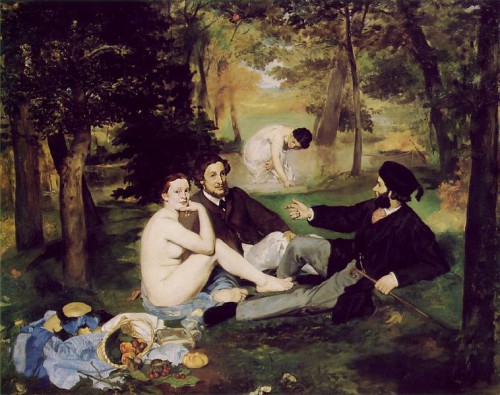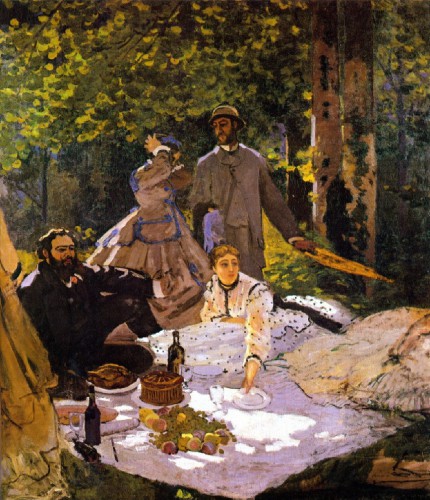When learning adjectives in an elementary language course, I often use examples from the visual arts to create a comparaison exercise. Two paintings that lend themselves well to this kind of exercise are Manet’s Déjeuner sur l’herbe (1862-1863) and Monet’s painting of the same title (1865-66).
Manet, Déjeuner sur l’herbe, painted 1862-1863
Monet, Déjeuner sur l’herbe, painted 1865-1866
Picasso also has a version inspired by Manet, which is an even more striking comparaison to make, but the image doesn’t appear in any online sources because of copyright issues, so I won’t use it here.
First, distribute the images to groups of two, or project them on a screen from a computer file (you can click and save the images above or find them on wikipedia’s commons). Give the title, dates, and introduce the painters. Ask the students to write a few sentences describing each painting, and then compare the two using comparative adverbs.
Apart from the obvious use of basic adjectives in this exercise (colors, numbers, etc.), what makes this group activity interesting is that students can often use more advanced terms that are close or identical to English vocabulary, such as bourgeois, scandaleux, abstrait, riche, prostituée. The discussion has often proven to be more sophisticated than a simple list of objects. Furthermore, many students will be familiar with the paintings and most will certainly recognize the artists’ names, giving the budding art historians in the class a chance to shine.
This is also a good opportunity to provide students with the vocabulary of the visual arts (premier plan, nature morte, paysage, etc.) – vocabulary that will prove useful throughout the course if you continue to incorporate artistic examples into classroom activities.

